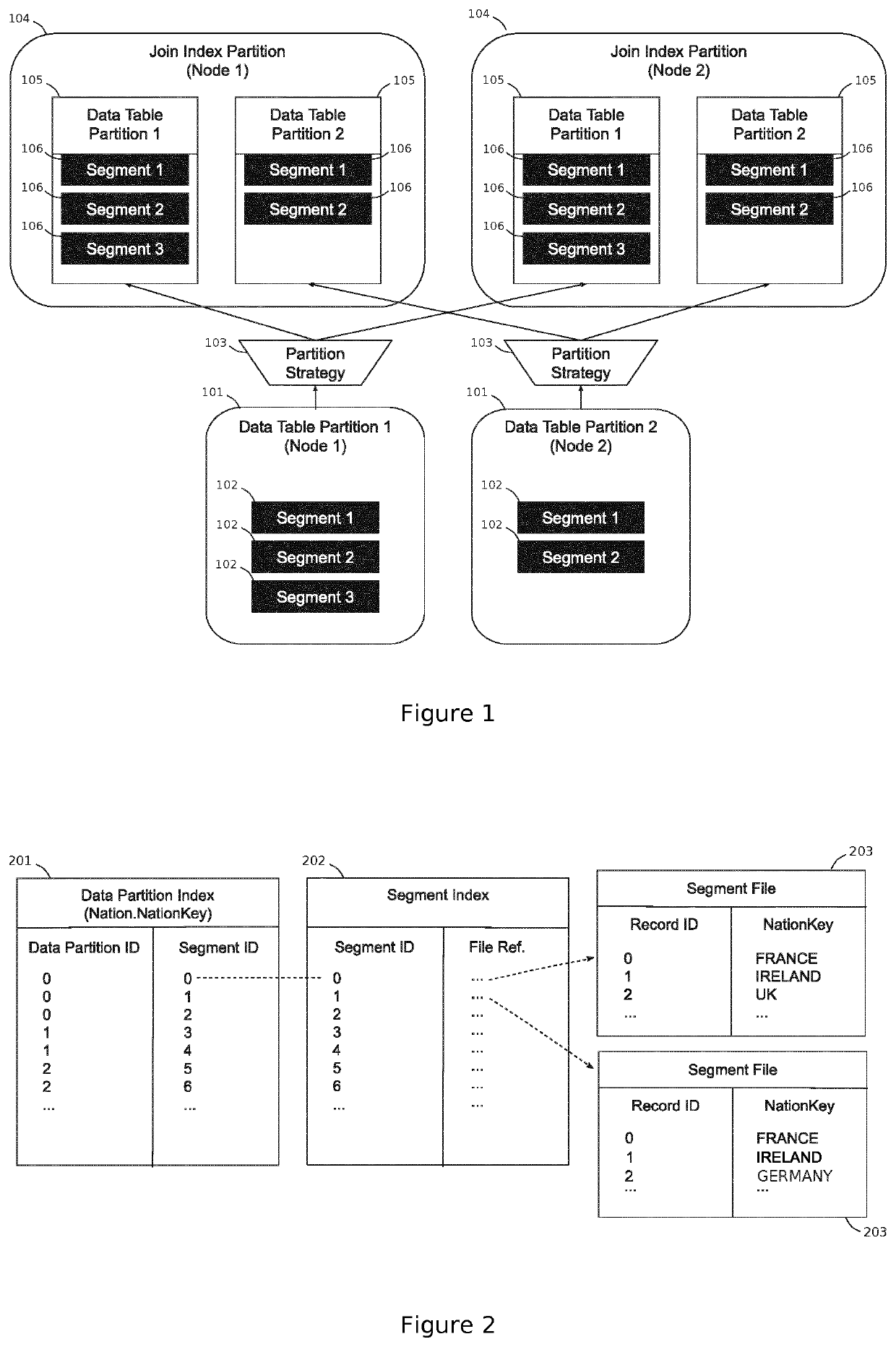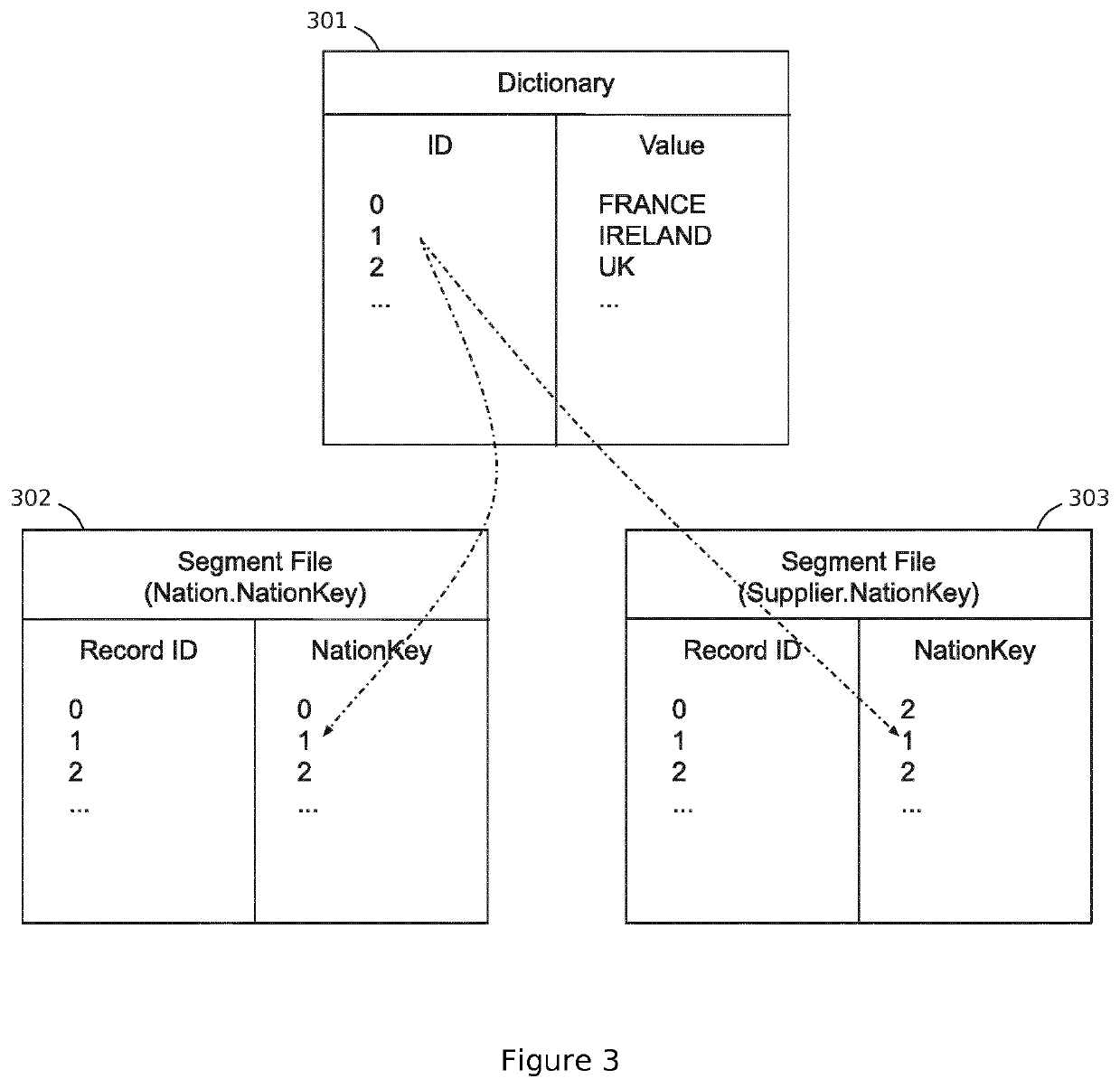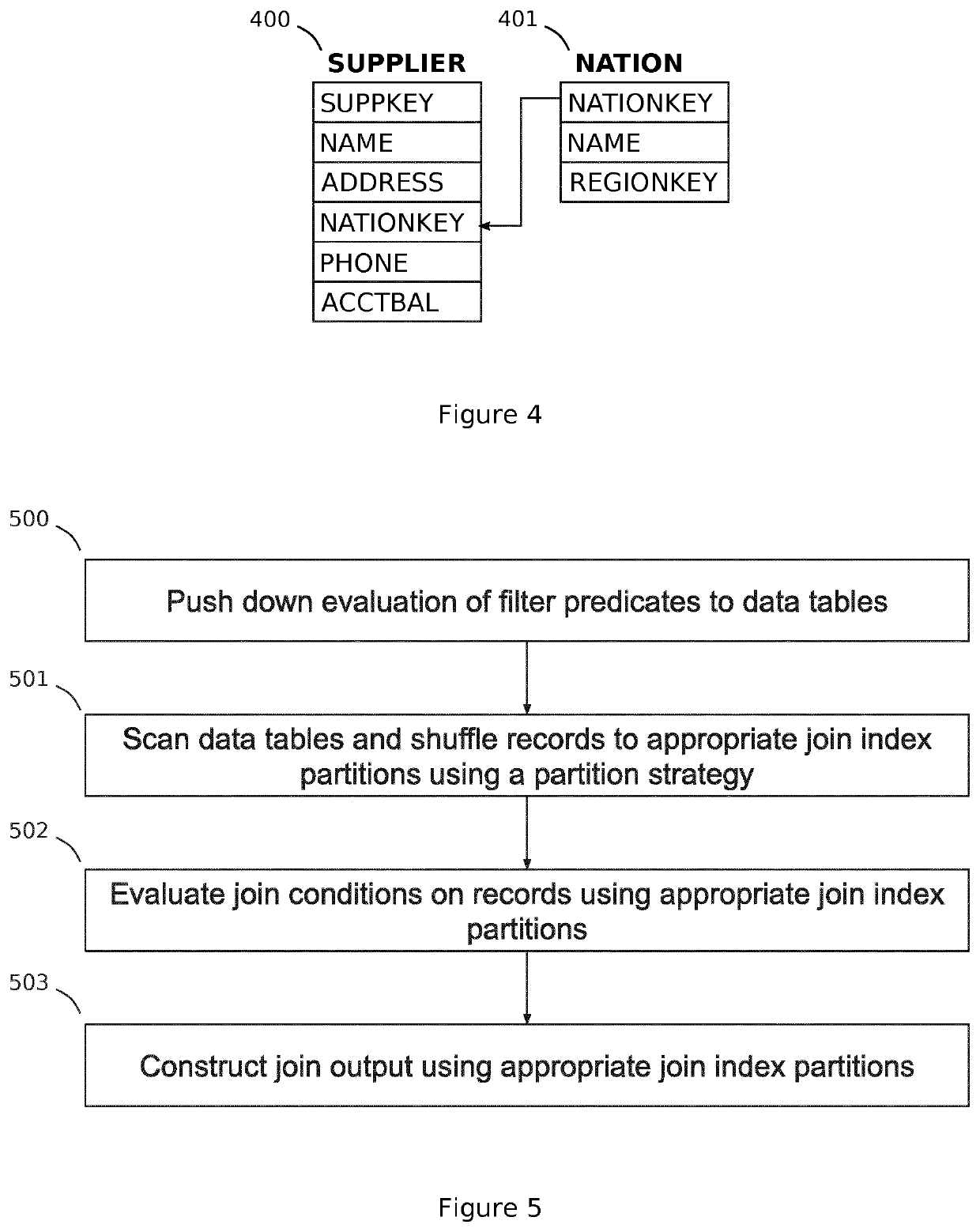Distributed join index for shared-nothing and log-structured databases
a log-structured database and distributed join technology, applied in the field of database, can solve the problems of increasing storage and maintenance costs, new problems in index maintenance, and high maintenance costs of join indexes, so as to facilitate incremental maintenance of join indexes, improve the performance of distributed join operations, and reduce data communication
- Summary
- Abstract
- Description
- Claims
- Application Information
AI Technical Summary
Benefits of technology
Problems solved by technology
Method used
Image
Examples
Embodiment Construction
[0130]Embodiments of the present disclosure will now be described with reference to some exemplary apparatus and systems described herein. It will be understood that the embodiments described are provided to assist in an understanding of the present disclosure and are not to be construed as limiting in any fashion. Furthermore, modules or elements that are described with reference to any one figure may be interchanged with those of other figures or other equivalent elements.
[0131]Described in the present disclosure is a distributed database system based on a shared-nothing and log-structured (append-only) architecture which can be key-value stores, document stores, graph stores, or columnar data stores. Many modern databases such as Cassandra [Lakshman, Avinash, and Prashant Malik. “Cassandra: a decentralized structured storage system.” ACM SIGOPS Operating Systems Review 44.2 (2010): 35-40], BigTable [Chang, Fay, et al. “Bigtable: A distributed storage system for structured data.” ...
PUM
 Login to View More
Login to View More Abstract
Description
Claims
Application Information
 Login to View More
Login to View More - R&D
- Intellectual Property
- Life Sciences
- Materials
- Tech Scout
- Unparalleled Data Quality
- Higher Quality Content
- 60% Fewer Hallucinations
Browse by: Latest US Patents, China's latest patents, Technical Efficacy Thesaurus, Application Domain, Technology Topic, Popular Technical Reports.
© 2025 PatSnap. All rights reserved.Legal|Privacy policy|Modern Slavery Act Transparency Statement|Sitemap|About US| Contact US: help@patsnap.com



